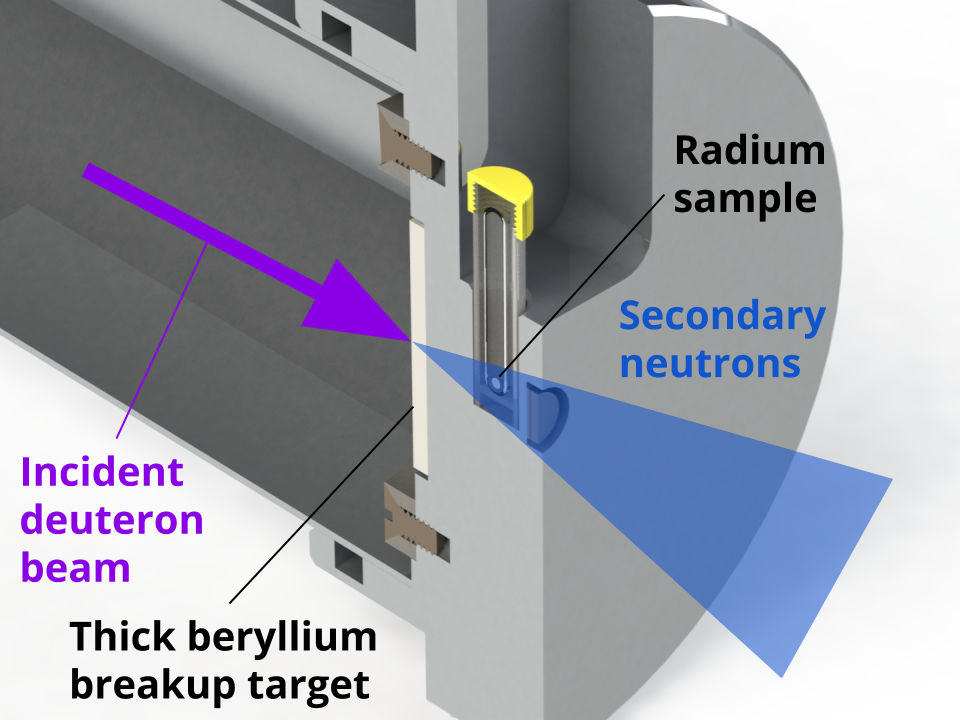Actinium-225 is a leading candidate isotope for an exciting new class of cancer treatment, targeted alpha therapy (TAT), which has shown potential to drastically improve recovery from metastatic cancers. Our program seeks to develop methods for producing 225Ac in quantities and purities sufficient for clinical use.

The method our program has proposed as a possible production pathway is to use secondary neutrons from deuteron breakup to drive the (n,2n) reaction on a 226Ra target, producing the 225Ra precursor to 225Ac. In this process, a deuteron beam created by a particle accelerator (such as a cyclotron) impinges on a thick beryllium target, where it is converted to a neutron beam through the breakup reaction. The radium sample is then placed very close to this beam, to maximize the flux incident upon the target.

Our program has performed two experiments measuring 225Ac yields through this process on a small, 1 mg radium sample. Initial results seem to agree well with predictions from the TENDL library, and will be published soon. Additionally, we performed measurements of the neutron spectrum from deuteron breakup, and developed a hybrid model to describe this process.